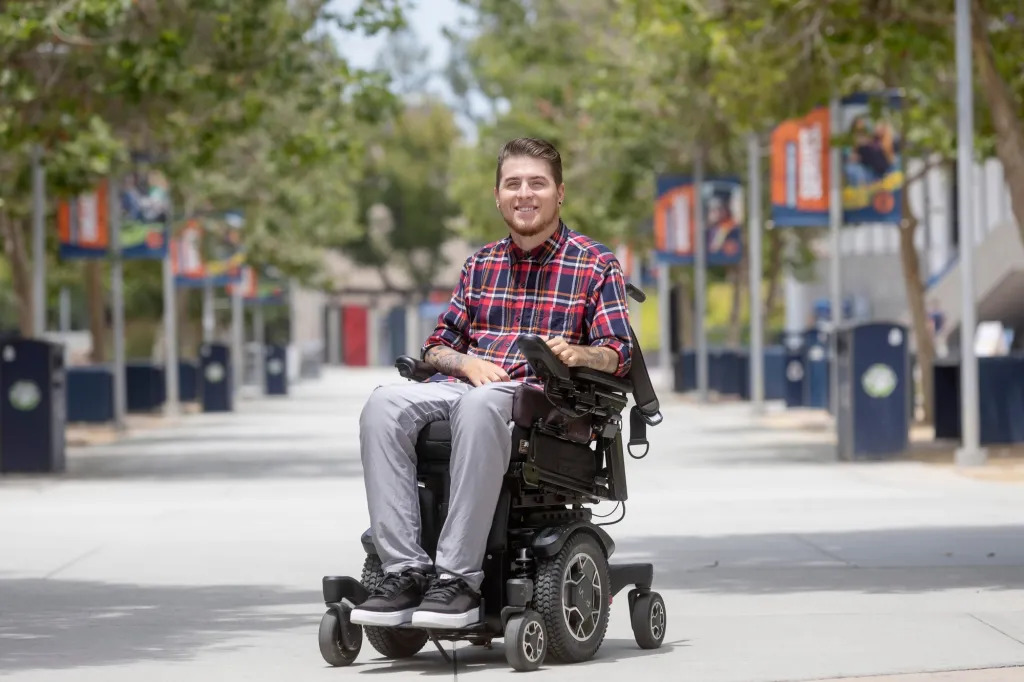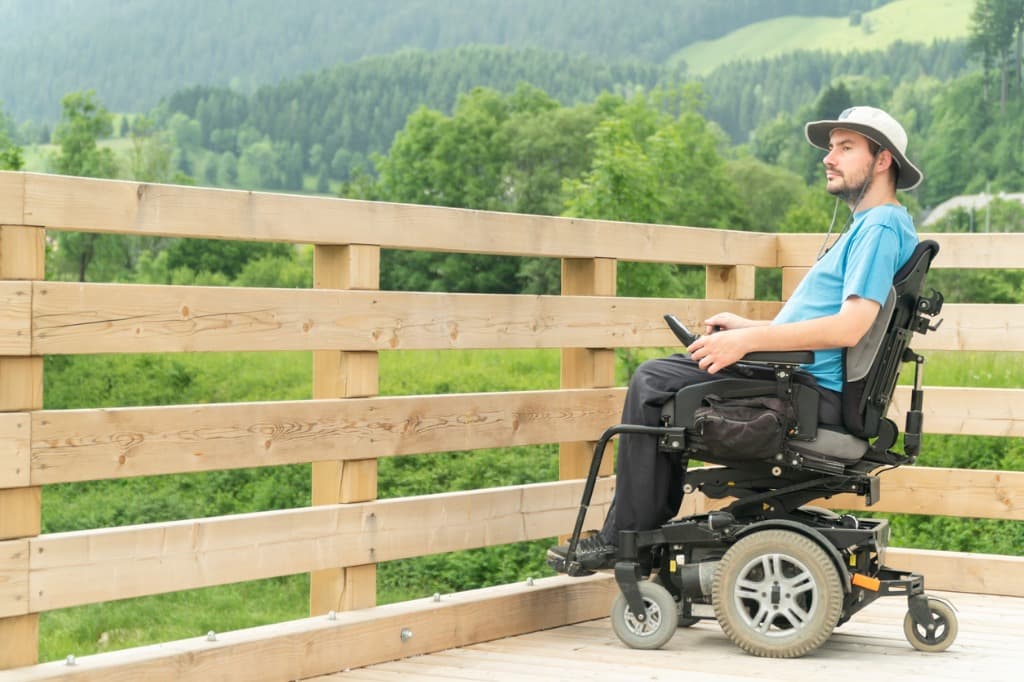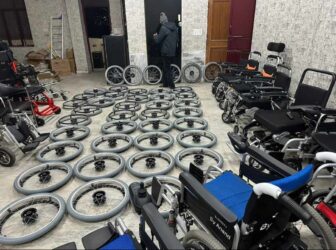As the name suggests, a wheelchair is a chair that is mobilized with the help of 2 or more wheels. It also usually comes with a built-in footrest and cushioned armrests. Wheelchairs are used by people who are unable to walk due to illnesses, disabilities, injuries, or any age-related conditions. Wheelchairs allow their users to move easily from one place to another.
This article will focus on one particular type of wheelchair for spinal cord injuries, i.e., an electric wheelchair. We will delve deep into the details of electric wheelchairs and how they are a boon for patients with spinal cord injuries.
What are Electric Wheelchairs for Spinal Cord Injury?
Electric wheelchairs or power wheelchairs as they are commonly called are wheelchairs that are used by people who are unable to manually operate a wheelchair. A power wheelchair reduces strain on a person’s shoulders and arms. An electric wheelchair is propelled by using an electric motor.
Electric wheelchairs were invented by George Klein to assist veterans who were injured in World War 2. George Klein worked for the National Research Council of Canada.

Mechanism behind Electric Wheelchairs
A power wheelchair is divided into two major components: the power base and the seat. The base consists of the motor, batteries, and other electrical components. The seat comprises cushions, backrests, and armrests. The armrest is equipped with a controller that is connected to the power base.
Components of an Electric Wheelchair for Spinal Cord Injuries
A power wheelchair has the following components:
- Chassis
Generally, electric wheelchairs have three styles of drive systems:
a) Front-wheel drive
· Quite stable with a tight turning radius
· The rear wheels are casters and the front wheels are in front of the user’s center of gravity.
· Not suitable for traveling on uneven surfaces
b) Centre-wheel drive
· Driver wheels directly below the user’s center of gravity
· A smaller turning radius makes it better suited for indoor usage
c) Rear-wheel drive
· Drive wheels behind the user’s center of gravity with casters in the front.
· A larger turning radius makes it predictable and stable
· Difficult to use in tight spaces - Battery
Batteries for electric wheelchairs are available in both wet and dry options. Dry cell batteries are preferred as wet ones are not allowed in aircraft. Power wheelchairs also come with charger units which can be plugged in. - Controller
An access device or drive control is the device that controls an electric wheelchair. Joysticks or sip-and-puff controllers are used to allow users to control the wheelchair. Mind-controlled wheelchairs that work by detecting nerve signals or brainwaves are being researched in the laboratory. - Seat
The seating system is divided into three categories, namely Off-the-shelf, Modular, and Custom. Some high-end electric wheelchairs feature a “standing” capability which allows to bring the user into an upright position. Powerchairs may also feature a reclining facility to give extra comfort to users who have trouble maintaining an upright position for a long time. Cushions and backrests are included with adjustable leg rests. - Usage
An electric wheelchair can be suitable for indoor or outdoor usage. Certain powerchairs can be used in both indoor and outdoor environments. Indoor ones feature smooth tires and a compact design. Outdoor ones have large tires to provide stability. Powerchairs that are suitable for both indoor and outdoor usage are small but with powerful batteries and grippy tires.
Types of Electric Wheelchairs
Electric wheelchairs or powerchairs are classified into the following three categories:
a) Travel power wheelchairs
These powerchairs are also called portable powerchairs as they are foldable. These powerchairs can be easily assembled and disassembled and hence they can fit in your car’s trunk or the cargo unit of an aircraft.

b) Full-size Reclining Power Wheelchairs
These powerchairs are popular for their comfort. They have larger seats with bigger armrests and footrests. Their battery is also of a higher range and hence can travel a fairly good distance as compared to travel power wheelchairs.

c) Heavy-duty power wheelchairs
Heavy-duty or HD powerchairs are suitable for weight capacity greater than 300lb. These wheelchairs are also known as bariatric power wheelchairs. These chairs have heavy-duty motors and reinforced frames and feature bigger seats.

How are Electric Wheelchairs a Boon for People with Spinal Cord Injury?
- In research, it was established that 68% of people who have SCI use a wheelchair for more than 40 hours per week.
- 39% of people with SCI use manual wheelchairs.
- 27% of people who have SCI use power wheelchairs.
- Power wheelchairs are suited for people who are not able to fully control their arm movements.
- Power wheelchairs give them the freedom to travel without depending on a caregiver.







Comments